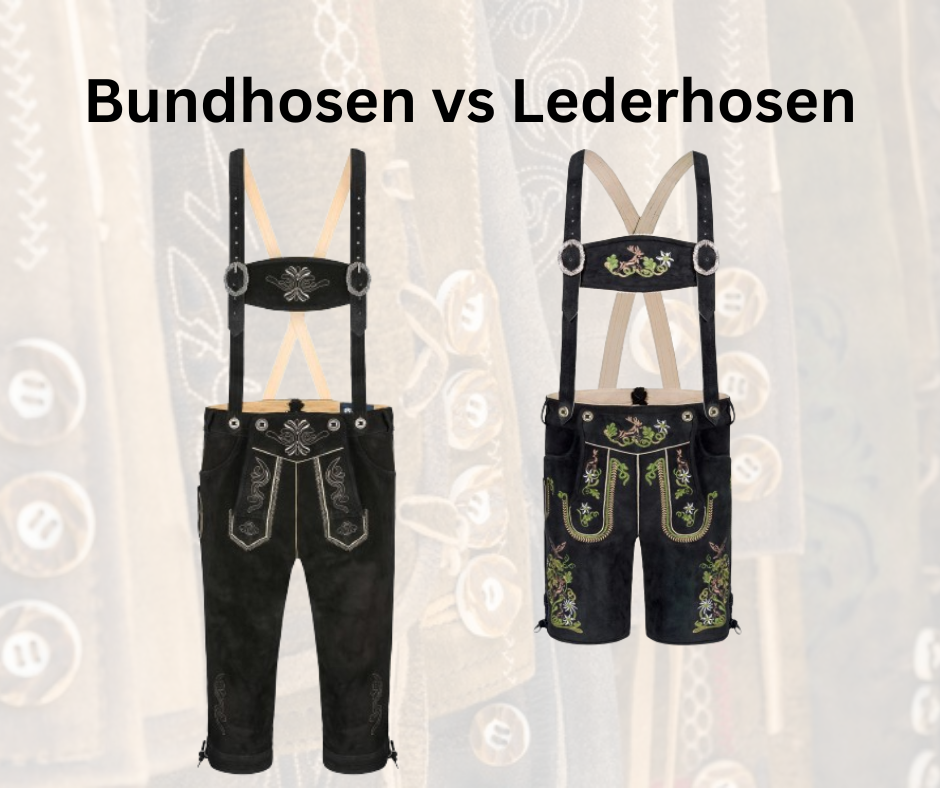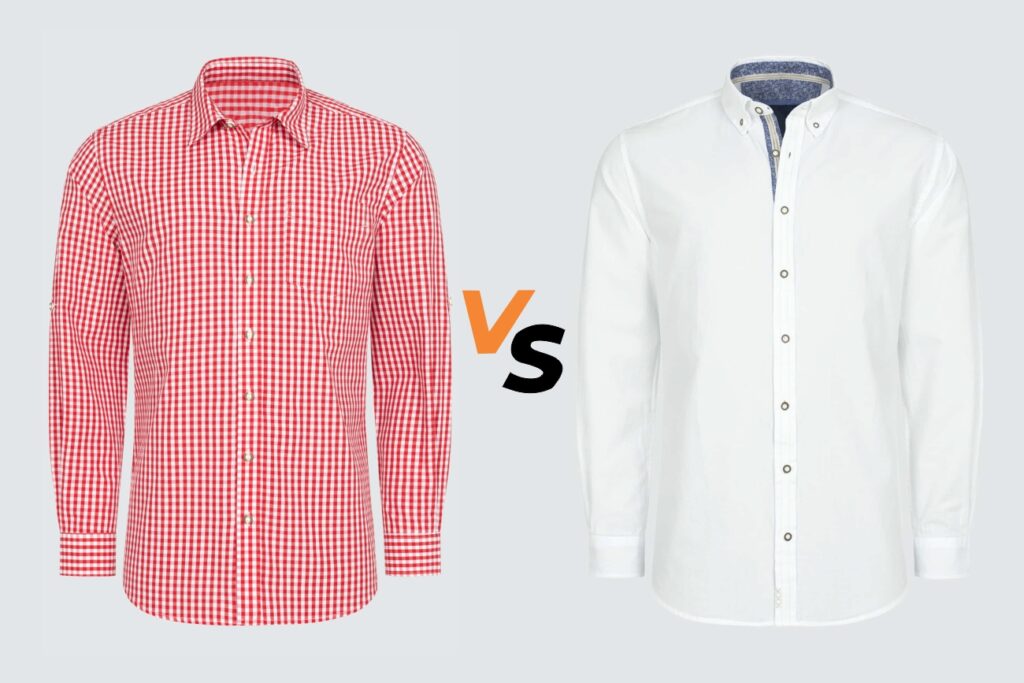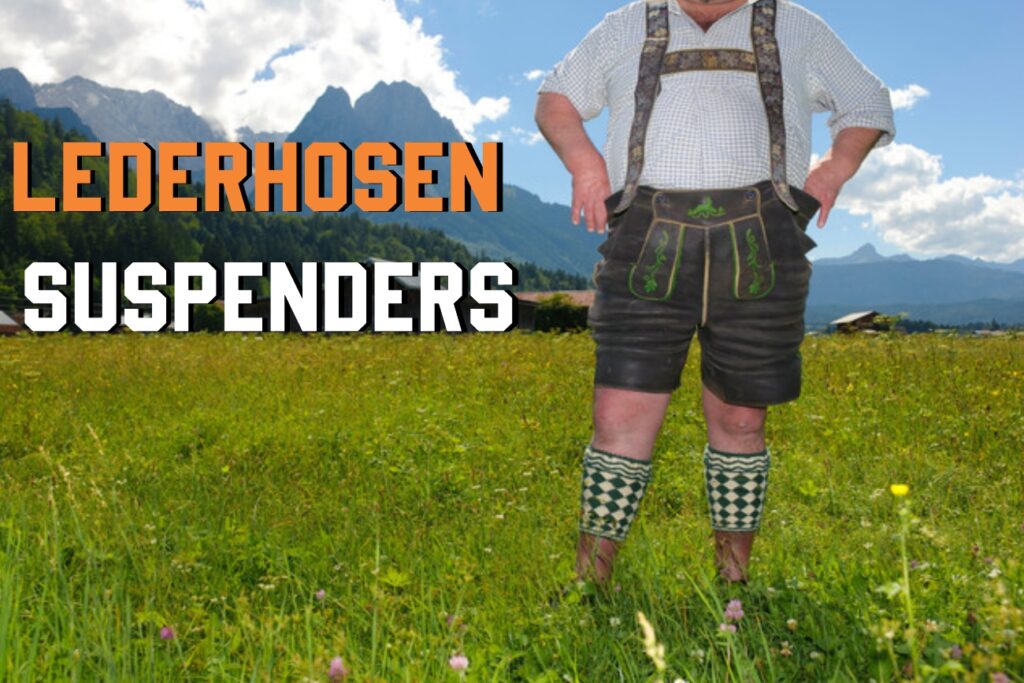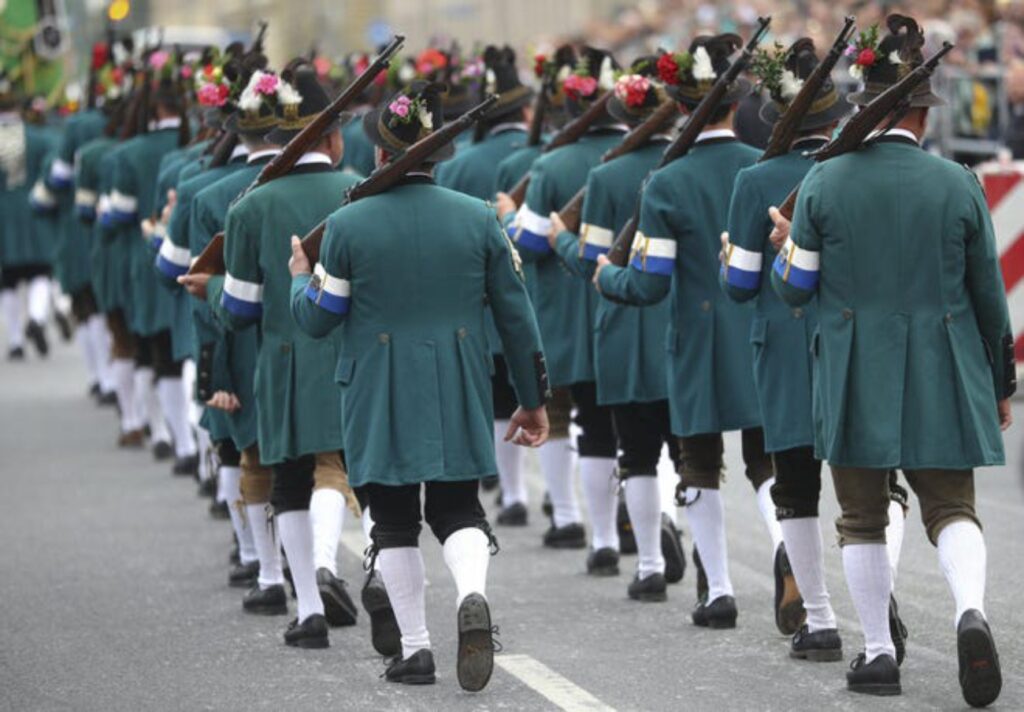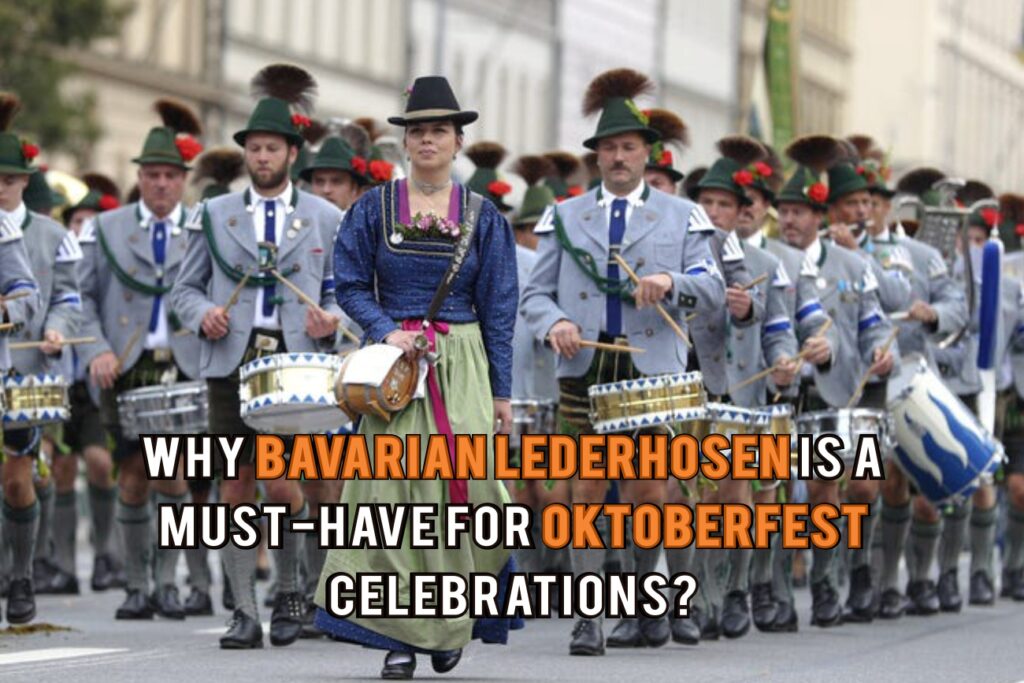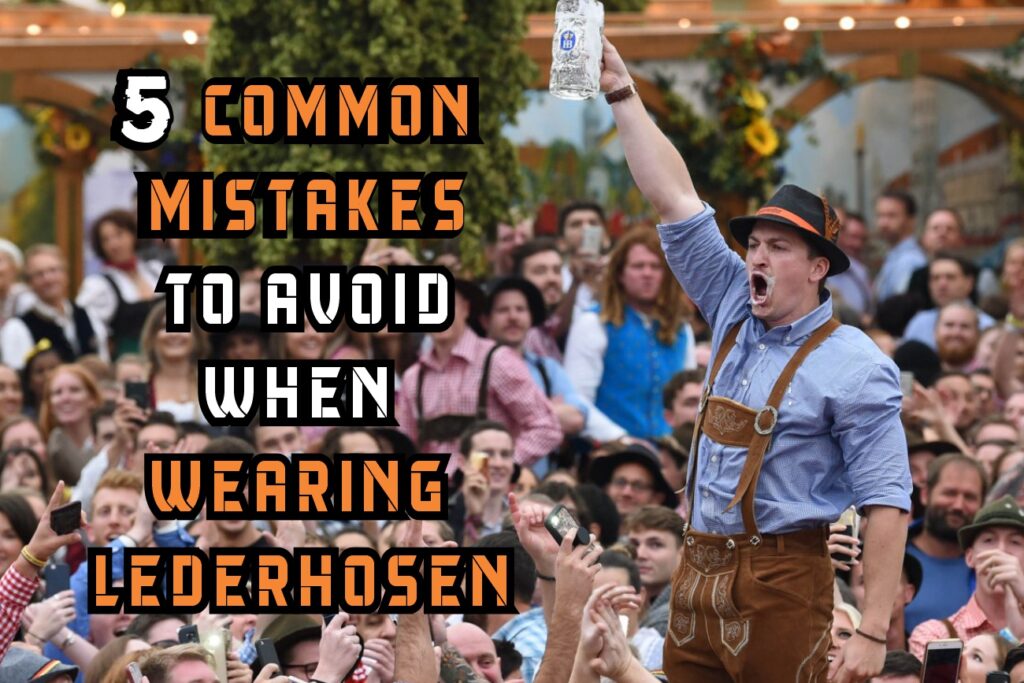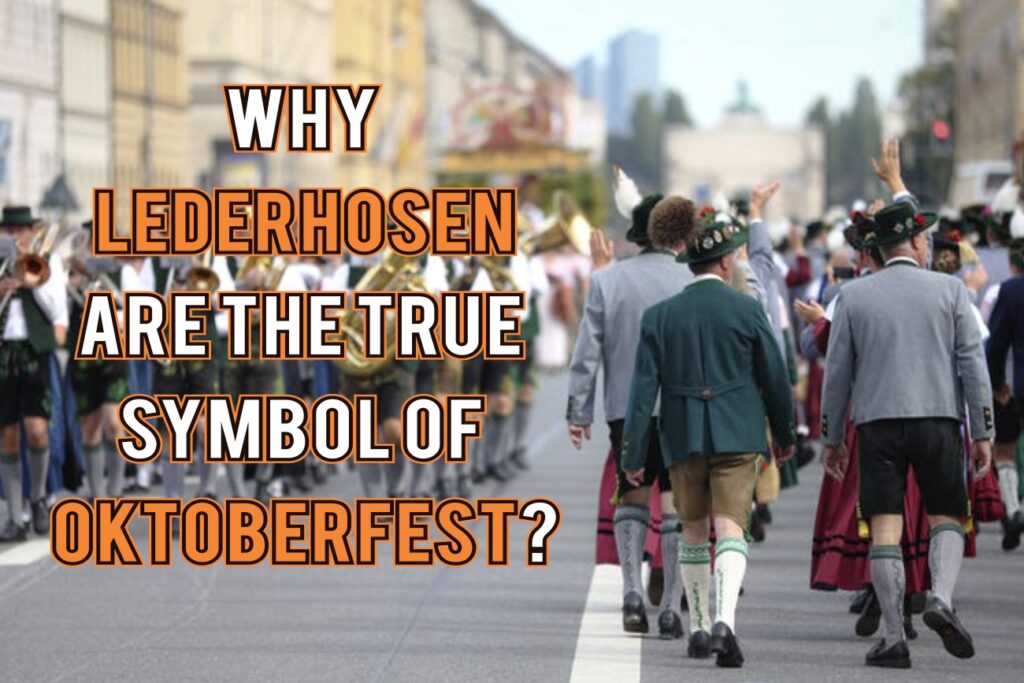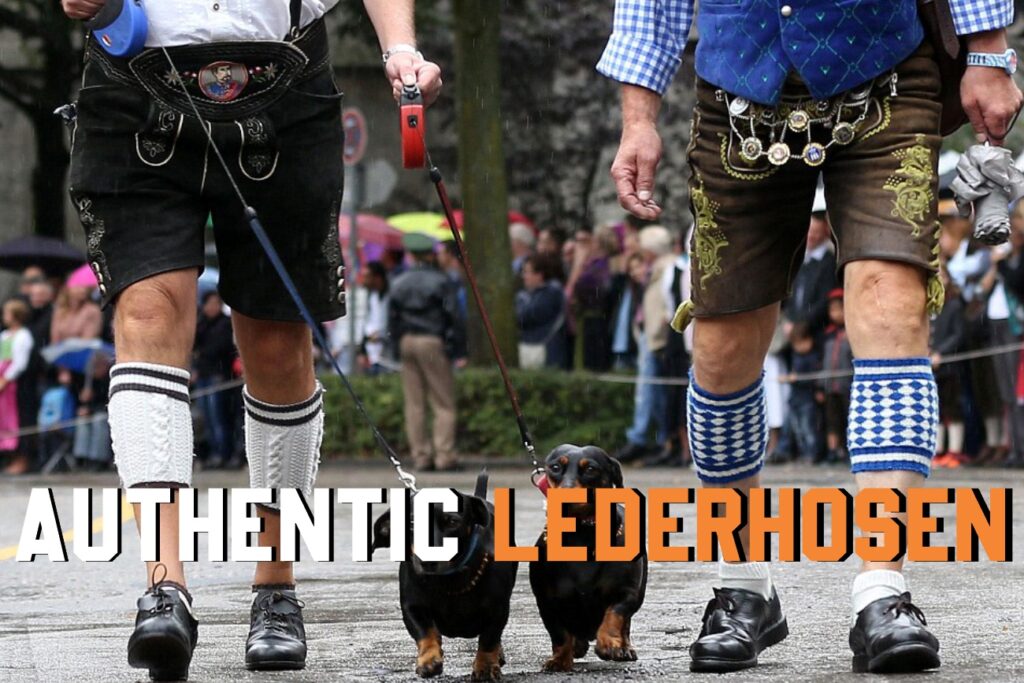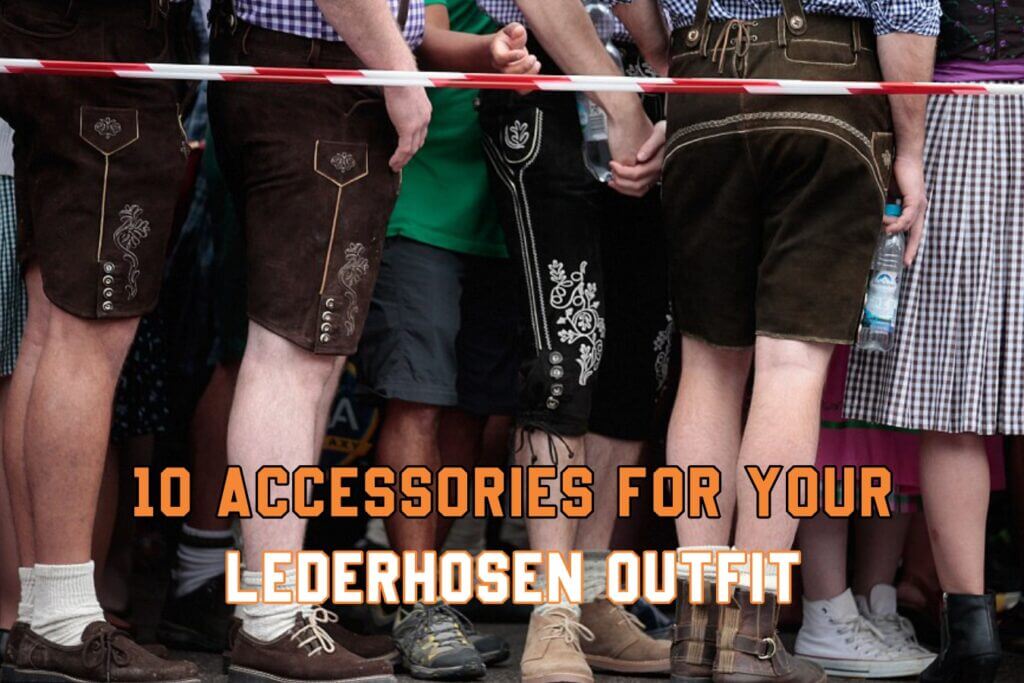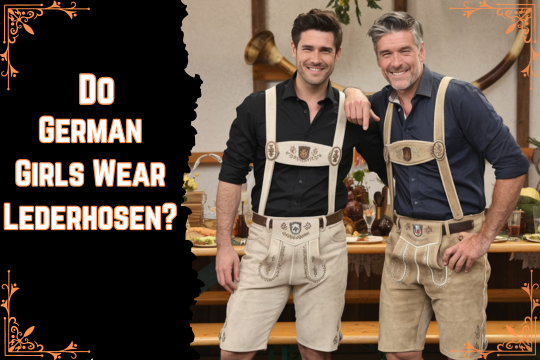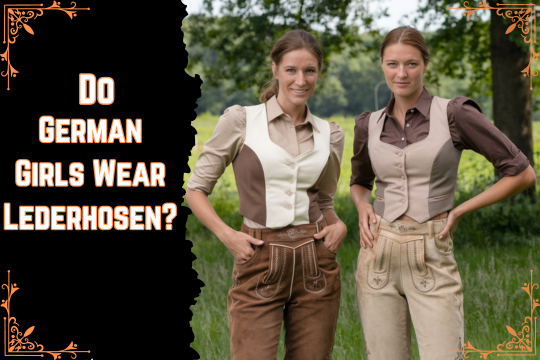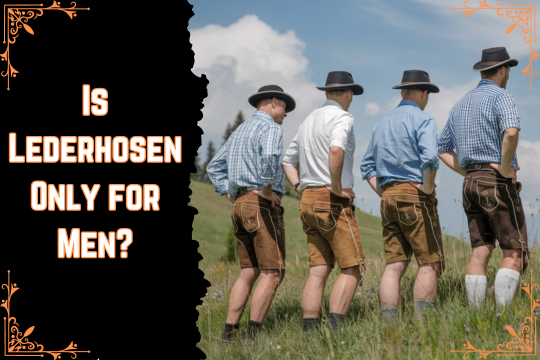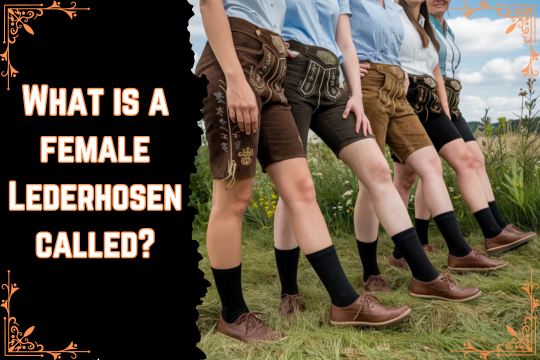Welcome to our guide on one of the most iconic debates in the world of German fashion: bundhosen vs. lederhosen. Whether you’re gearing up for Oktoberfest or simply intrigued by traditional German attire, understanding the nuances between these two garments is essential. From the classic charm of lederhosen to the understated elegance of bundhosen, each garment tells a story of heritage, craftsmanship, and cultural pride.
In this comprehensive exploration, we delve into the intricacies of bundhosen and lederhosen, examining everything from their historical significance to their modern-day interpretations. Join us as we unravel the mysteries behind long lederhosen, explore the female version of lederhosen, and uncover the secrets of authentic German clothes.
So, whether you’re a seasoned Oktoberfest-goer looking to perfect your outfit or simply curious about traditional German apparel, sit back, relax, and immerse yourself in the fascinating world of bundhosen and lederhosen. Let’s embark on this sartorial journey together and discover the true essence of German fashion.
The Classic Lederhosen: A Bavarian Icon
When it comes to traditional German attire, few garments are as iconic and timeless as the lederhosen. These leather shorts, adorned with intricate embroidery and often accompanied by suspenders, have been a staple of Bavarian culture for centuries. Originally worn by working-class men in rural areas, lederhosen has evolved into a symbol of German heritage and is closely associated with festivities like Oktoberfest.
Lederhosen for Men: For men, lederhosen represents more than just a piece of clothing; it embodies a sense of pride in one’s heritage and tradition. Crafted from high-quality leather, these shorts are designed to withstand the rigors of outdoor activities, making them practical as well as fashionable. The intricate embroidery adorning the front flap, pockets, and suspenders adds a touch of elegance to the rustic charm of the garment.
Authentic Lederhosen Women: While traditionally worn by men, lederhosen has also found its way into women’s fashion. Modern interpretations of the classic garment cater to female silhouettes while staying true to its Bavarian roots. From tailored shorts to skirts inspired by the iconic design, women can embrace the spirit of Oktoberfest with their own twist on this traditional attire.
Lederhosen Back: The back of lederhosen is often overlooked but plays a crucial role in both aesthetics and functionality. The adjustable straps ensure a comfortable fit, allowing wearers to move freely while dancing or partaking in outdoor activities. Additionally, the intricate detailing on the back panel adds to the overall charm of the garment, making it a standout piece in any traditional German ensemble.
German Socks and Attire: Completing the lederhosen ensemble are knee-high socks, known as “kniestrümpfe,” and sturdy footwear, typically Haferlschuh or Trachtenschuhe. These accessories not only add to the authenticity of the outfit but also provide practicality, especially during long hours of celebration at events like Oktoberfest.
Oktoberfest Dress Code: For many attendees of Oktoberfest and other traditional German festivals, wearing lederhosen is not just a fashion choice but a cultural obligation. Adhering to the dress code not only shows respect for German traditions but also allows participants to fully immerse themselves in the festive atmosphere.
Bundhosen: The Long Lost Cousin
In the realm of traditional German attire, bundhosen may not be as widely recognized as their shorter counterpart, lederhosen, but they hold a unique charm of their own. Often referred to as “long lederhosen,” bundhosen offer a more conservative alternative while still embracing the essence of Bavarian fashion.
Bundhosen Overview: Bundhosen, as the name suggests, are trousers that extend below the knee, offering more coverage compared to traditional lederhosen. Made from durable fabrics like wool or cotton, these trousers are well-suited for colder climates or for individuals seeking a more modest option.
Bundhosen for Men and Women: While lederhosen is predominantly associated with men’s attire, bundhosen are more inclusive in terms of gender. Both men and women can opt for this style, which provides a versatile and practical alternative to the shorter lederhosen.
German Leaderhosen vs. Bundhosen: While lederhosen and bundhosen share similarities in terms of craftsmanship and detailing, the main point of differentiation lies in their length. While lederhosen typically ends above the knee, bundhosen extend to the calf or ankle, offering a more conservative option for those who prefer extra coverage.
Authentic German Clothes: Bundhosen is a testament to the diversity within traditional German attire, offering an alternative to the more commonly known lederhosen. When paired with a traditional Bavarian shirt and accessories like suspenders and alpine hats, bundhosen create a distinctive look that pays homage to German heritage.
German Attire Evolution: As fashion evolves, so too does traditional German attire. While lederhosen remains the quintessential symbol of Bavarian culture, bundhosen offers a fresh perspective, catering to individuals with varying style preferences and comfort levels.
Bundhosen Appeal: The appeal of bundhosen lies in their versatility and practicality. Whether worn for cultural celebrations, outdoor activities, or everyday wear, bundhosen embody the spirit of Bavaria while offering a comfortable and stylish option for modern-day enthusiasts.
By embracing both lederhosen and bundhosen, individuals can celebrate the rich tapestry of German culture while expressing their own unique sense of style and tradition. Whether opting for the classic charm of lederhosen or the understated elegance of bundhosen, one thing remains certain: German attire continues to captivate and inspire generations around the world.
Length Matters: Choosing Between Bundhosen vs Lederhosen
When it comes to traditional German attire, one of the key distinctions between lederhosen and bundhosen lies in their length. This factor not only affects the overall aesthetic but also influences the practicality and versatility of these garments.
Lederhosen vs. Bundhosen Length:
Lederhosen, with their characteristic short length, epitomizes the quintessential Bavarian look. Ending above the knee, lederhosen offers a classic and timeless silhouette that has become synonymous with festivals like Oktoberfest. On the other hand, bundhosen extend below the knee, providing more coverage and a slightly more conservative appearance.
Practical Considerations:
The choice between lederhosen and bundhosen often comes down to personal preference and practicality. For warmer climates or occasions where mobility is key, shorter lederhosen may be preferred for their ease of movement and breathability. However, in colder weather or for individuals seeking a more modest option, bundhosen offer warmth and additional coverage without sacrificing style.
Aesthetic Appeal:
Both lederhosen and bundhosen boast intricate embroidery and detailing that reflect the rich cultural heritage of Bavaria. Whether adorned with floral motifs, traditional patterns, or intricate stitching, these garments serve as expressions of craftsmanship and tradition. The decision between the two often depends on the desired aesthetic and the occasion for which they will be worn.
Versatility in Style:
While lederhosen are synonymous with Oktoberfest and other traditional German festivals, bundhosen offer a broader range of styling options. Their longer length lends itself well to year-round wear, making them suitable for casual outings, outdoor activities, and even formal occasions. Bundhosen’s versatility allows wearers to incorporate them into their everyday wardrobe beyond the confines of festival grounds.
Personal Expression:
Ultimately, the choice between lederhosen and bundhosen is a matter of personal expression and comfort. Whether opting for the classic charm of lederhosen or the understated elegance of bundhosen, individuals have the opportunity to showcase their unique sense of style while paying homage to German tradition.
Beyond Oktoberfest: Wearing Lederhosen and Bundhosen Year-Round
While lederhosen and bundhosen are closely associated with Oktoberfest and other traditional German festivals, their appeal extends far beyond the confines of these seasonal celebrations. As versatile garments that blend tradition with modern style, lederhosen and bundhosen can be incorporated into year-round wardrobes, offering wearers the opportunity to embrace German heritage in everyday life.
Casual Wear:
Lederhosen, with their shorter length and rustic charm, is perfect for casual outings and gatherings. Paired with a simple shirt or sweater, lederhosen adds a touch of Bavarian flair to everyday ensembles. Whether strolling through the city streets or enjoying a leisurely afternoon in the countryside, lederhosen evokes a sense of nostalgia and authenticity that transcends seasonal festivities.
Outdoor Adventures:
For outdoor enthusiasts, bundhosen offer practicality and durability that make them ideal for adventures in nature. Their longer length provides added protection against the elements, making them suitable for hiking, camping, and other outdoor activities. Crafted from sturdy materials like wool or cotton, bundhosen can withstand the rigors of outdoor exploration while still exuding traditional German charm.
Formal Occasions:
Beyond casual wear, both lederhosen and bundhosen can be elevated for more formal occasions. Paired with a tailored shirt, blazer, and polished footwear, these traditional garments make a sophisticated statement at weddings, cultural events, and other special gatherings. Their timeless appeal and attention to detail ensure that wearers stand out with elegance and grace.
Global Fashion Influence:
In recent years, lederhosen and bundhosen have gained popularity beyond Germany’s borders, influencing fashion trends around the world. From runways to street style, these traditional garments have been reimagined and adapted to suit contemporary tastes, proving that their appeal transcends cultural boundaries.
Cultural Heritage Preservation:
By incorporating lederhosen and bundhosen into year-round wardrobes, wearers not only celebrate German heritage but also contribute to the preservation of traditional craftsmanship and culture. Whether worn during Oktoberfest or on an ordinary day, these garments serve as reminders of the rich tapestry of traditions that continue to shape our global community.
As symbols of tradition, craftsmanship, and cultural pride, lederhosen and bundhosen offer wearers a unique opportunity to connect with German heritage in a meaningful and authentic way, both during festive seasons and throughout the year.
A Guide to Authentic German Attire
Authentic German Clothes and Traditional German Apparel:
Authentic German attire is more than just clothing; it’s a reflection of centuries-old traditions and cultural heritage. At the forefront of this iconic wardrobe are lederhosen and bundhosen, representing the quintessential Bavarian style. Crafted from high-quality materials like leather, wool, and cotton, these garments boast intricate embroidery and detailing inspired by traditional German patterns.
Lederhosen vs. Bundhosen:
While lederhosen is synonymous with Bavarian culture, bundhosen offers a slightly different take on traditional German attire. Both garments exude charm and sophistication, with lederhosen featuring shorter lengths and bundhosen offering more coverage below the knee. Choosing between the two depends on personal preference and the occasion for which they will be worn.
Oktoberfest Dress Code and Beyond:
For many, Oktoberfest serves as the ultimate showcase of authentic German attire. From lederhosen-clad men to women adorned in dirndls, the festival provides a glimpse into the rich tapestry of Bavarian fashion. However, the appeal of traditional German attire extends far beyond Oktoberfest, with lederhosen and bundhosen making appearances at weddings, cultural events, and everyday occasions.
Lederhosen for Men and Women
Lederhosen Women and Authentic Lederhosen Women:
While lederhosen is traditionally associated with men, women have embraced this iconic garment with their unique flair. Authentic lederhosen for women features tailored cuts and feminine detailing, offering a stylish alternative to traditional dirndls. From shorts to skirts inspired by the classic design, women can showcase their love for German culture while making a fashion statement.
Female Version of Lederhosen:
The female version of lederhosen combines the timeless charm of Bavarian tradition with modern sensibilities. Whether opting for a traditional leather ensemble or a contemporary interpretation, women can express their individuality while paying homage to German heritage. With options ranging from classic to chic, the female version of lederhosen offers something for every style preference.
The Perfect Accessories: Socks, Suspenders, and More
German Socks and Lederhosen Straps:
No authentic German attire is complete without the perfect accessories. Knee-high socks, known as “kniestrümpfe,” complement lederhosen and bundhosen, adding a touch of authenticity to the ensemble. Meanwhile, suspenders play a practical role in securing the garment in place, allowing wearers to move with ease and confidence. With attention to detail and craftsmanship, these accessories enhance the overall look and feel of traditional German attire.
From Bavaria to the World: The Legacy of Lederhosen
Lederhosen and German Leaderhosen:
As symbols of Bavarian culture, lederhosen holds a special place in the hearts of Germans and enthusiasts worldwide. From the intricate embroidery to the adjustable straps, every aspect of lederhosen reflects the craftsmanship and attention to detail that define authentic German attire. Whether worn during Oktoberfest or as part of everyday attire, lederhosen continues to captivate and inspire generations, carrying the legacy of Bavaria to the far corners of the globe.
Oktoberfest Fashion: Dressing for the Festival
Oktoberfest Dress Code and Outfit:
As one of the largest celebrations of Bavarian culture, Oktoberfest brings together millions of people from around the world, all eager to embrace the festival’s vibrant atmosphere. Central to the Oktoberfest experience is the traditional Bavarian attire, with lederhosen and dirndls taking center stage. Adhering to the Oktoberfest dress code not only pays homage to German tradition but also adds to the festive ambiance of the event.
Lederhosen and Dirndls:
For men, lederhosen are the quintessential Oktoberfest attire, exuding charm and authenticity. Paired with knee-high socks and traditional footwear, lederhosen create a classic Bavarian look that is both stylish and practical. Meanwhile, women don dirndls, featuring bodices, blouses, skirts, and aprons, reflecting the rich cultural heritage of Bavaria. From vibrant colors to intricate embroidery, dirndls add a touch of elegance to the Oktoberfest outfit.
Beyond Traditional Attire:
While lederhosen and dirndls dominate the Oktoberfest fashion scene, attendees are encouraged to embrace their individual style and creativity. Whether adding personalized accessories or opting for modern interpretations of traditional attire, Oktoberfest fashion offers endless possibilities for self-expression and celebration.
Sexy and Authentic Don’t Have to Clash: A Guide to Stylish Lederhosen
Sexy Male Lederhosen and Lederhosen Dress:
In recent years, there has been a growing trend towards incorporating elements of sexiness and style into traditional German attire. This fusion of tradition and modernity is exemplified by the emergence of sexy male lederhosen, which combine the timeless charm of Bavarian culture with contemporary fashion sensibilities. With tailored cuts, sleek designs, and attention-grabbing details, these lederhosen redefine the notion of authenticity while maintaining the essence of German heritage.
Stylish Interpretations:
For those looking to make a fashion statement at Oktoberfest or other cultural events, lederhosen dress offers a sophisticated alternative to traditional attire. Featuring longer lengths, form-fitting silhouettes, and fashionable embellishments, lederhosen dress exudes elegance and allure without compromising on authenticity. Whether worn by men or women, these stylish interpretations of lederhosen showcase the versatility and adaptability of German fashion.
Unveiling the Bavarian Look: Traditional Patterns and Local Flair
Traditional German Pattern and Bavarian Typical Dress:
At the heart of Bavarian fashion lies a rich tapestry of traditional patterns and local flair that embody the spirit of German heritage. From intricate floral motifs to geometric designs, traditional German patterns adorn garments like lederhosen and dirndls, adding depth and character to the attire. Meanwhile, Bavarian typical dress captures the essence of rural life in the German countryside, with garments like bundhosen and trachten shirts reflecting the rustic charm of the region.
Embracing Local Flair:
While traditional German patterns serve as a nod to the past, modern interpretations of Bavarian attire incorporate elements of contemporary design and global influence. From bold colors to innovative textures, today’s Bavarian fashion scene celebrates diversity and creativity, offering a fresh perspective on classic styles. Whether worn at Oktoberfest or in everyday life, Bavarian attire continues to captivate and inspire with its unique blend of tradition and innovation.
In conclusion, the debate between bundhosen and lederhosen transcends mere fashion choices; it embodies a deeper appreciation for German culture and heritage. While lederhosen remain the quintessential symbol of Bavarian tradition, bundhosen offer a unique alternative, catering to diverse preferences and occasions. Whether adorned with intricate embroidery or sleek designs, both garments evoke a sense of authenticity and pride in one’s roots.
From Oktoberfest celebrations to everyday wear, lederhosen and bundhosen allow individuals to connect with German heritage in meaningful ways. Whether it’s the timeless charm of lederhosen for men or the stylish elegance of authentic lederhosen for women, these garments serve as symbols of tradition and craftsmanship. With attention to detail, from lederhosen straps to traditional German patterns, wearers can embrace their cultural identity with confidence and style.
As fashion evolves and trends come and go, one thing remains certain: the legacy of bundhosen and lederhosen endures, shaping the way we perceive and appreciate German attire. Whether it’s a traditional German outfit for men or a contemporary twist on lederhosen dress, these garments continue to captivate and inspire generations, bridging the gap between past and present, tradition and innovation. So, whether you opt for the classic charm of lederhosen or the understated elegance of bundhosen, embrace your German heritage with pride and confidence, knowing that you are part of a timeless legacy of style and tradition.
FAQs
What are lederhosen?
Lederhosen are traditional German garments, typically made of leather, that consist of breeches or shorts with suspenders. They are a symbol of Bavarian culture and are often worn during festivals like Oktoberfest.
What shoes with lederhosen?
Traditionally, lederhosen are worn with Haferlschuh or Trachtenschuhe, which are sturdy, traditional Bavarian shoes. These shoes complement the rustic charm of lederhosen and are well-suited for walking and dancing at festivals.
How to spell lederhosen?
Lederhosen is spelled as “L-e-d-e-r-h-o-s-e-n.”
Incorrect Spelling:
lederhose, leiterhosen, lederhousen, leidenhausen, liderhosen, liederhousen, leder hosen, lader hosen, leidehosen, liederhosen, lieterhosen, leaderhosen, leaderhosen, laderhosen, leterhosen, leaderhozen, ladenhosen, laterhosen, liederhisen, lenderhosen, lderhosen, lederhorsen, leferhosen, liederhosen, ledierhosen, laderhosen, laderhosen, literhosen, laterhosen, ledenhosen, leserhosen
How to wear lederhosen?
To wear lederhosen properly, start by putting on a traditional shirt, then slip into the lederhosen shorts or breeches. Fasten the suspenders over your shoulders and adjust them for a comfortable fit. Finally, pair the outfit with knee-high socks and traditional Bavarian shoes.
How to clean lederhosen?
Lederhosen should be spot-cleaned with a damp cloth if necessary. For deeper cleaning, it’s best to take them to a professional leather cleaner to ensure that the material is properly cared for and maintained.
How should lederhosen fit?
Lederhosen should fit snugly but comfortably around the waist and hips. The shorts or breeches should end just above the knee, and the suspenders should be adjusted to ensure they are neither too loose nor too tight.
How to wear bundhosen?
Bundhosen, or long lederhosen, are worn similarly to traditional lederhosen. They feature a longer length that extends below the knee, offering more coverage. Pair bundhosen with knee-high socks, traditional Bavarian shoes, and a traditional shirt for a complete look.
Do females wear lederhosen?
Yes, females can wear lederhosen as well. There are authentic lederhosen designs tailored specifically for women, offering a feminine take on the traditional Bavarian garment.
Do you have to wear lederhosen at Oktoberfest?
While wearing lederhosen is not mandatory at Oktoberfest, it is highly encouraged as part of embracing the festive spirit and traditional Bavarian culture. Many attendees choose to wear lederhosen or dirndls to fully immerse themselves in the Oktoberfest experience.

